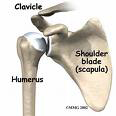 Shoulder pain is the second commonest joint complaint after back pain. Therefore, it is surprising that the sub-speciality of shoulder surgery is only relatively new.
Shoulder pain is the second commonest joint complaint after back pain. Therefore, it is surprising that the sub-speciality of shoulder surgery is only relatively new.
For many years, shoulder problems were largely ignored and all problems tended to be diagnosed as being a “frozen shoulder”. The situation has changed radically over the last 20 years, and this reflects the arrival of MR and CT imaging, and more recently, the application of arthroscopic (keyhole) shoulder surgery techniques. These advances have allowed surgeons to provide accurate diagnosis of the underlying shoulder problems and to direct treatment specifically at the associated pathology. This has resulted in high levels of patient satisfaction where previously results were indifferent.
The number of specialist shoulder surgeons within the United Kingdom is relatively small. This reflects the developing nature of this subspecialty and the demanding nature of the surgery.
In general terms, shoulder problems can be divided into three main groups, based upon age. In the young, problems tend to related to shoulder instability. In middle age, the commonest problems are pain due to impingement syndrome or pain and stiffness related to a frozen shoulder. Finally, in the older age group, pain and lack of movement commonly reflect rotator cuff disease or osteoarthiritic change.

